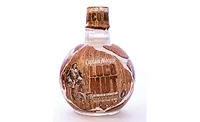Channel Strategies
Technology playing larger role in merchandising executions
Eye-catching visuals, brand messaging can facilitate high payout for beverage-makers

One never knows what can happen during the March Madness college basketball tournament. On March 19, Oral Roberts University, a No. 15 seed, stunned No. 2 seed Ohio State in overtime with a 75-72 victory. This upset was only the ninth time in the history of the NCAA tournament that a No. 15 seed defeated a No. 2 seed, proving that there’s no such thing as a “sure thing” in the world of sports. In the world of brick-and-mortar grocery shopping, however, beverage brands recognize ― now more than ever ― the importance of catching the fickle consumer’s eye with an eye-catching visual display and creative brand messaging to “score” that all-important sale.
In the competition for beverage sales at on-premise retailers, where hundreds of products line shelves and coolers, merchandisers recognize the importance of point-of-position (POP) and point-of-sale (POS) displays of interesting and colorful sizes and shapes to support the path to purchase.
Stephanie Heil, senior director of marketing activation at HEINEKEN USA, White Plains, N.Y., notes that innovation and technology are elevating the POP/POS channel.
“Elevated and unique innovative ideas and solutions are being brought to the market breaking away from your traditional light up, motion type displays,” Heil says. “Shifting focus to ease and quickness of assembly, cost effectiveness of the unit while maintaining impact at retail. Additionally, the ability to connect with the consumer through localization has been increasingly relevant, with companies investing in systemic solutions to provide customizable messaging and localization.
“Finally, like in most spaces, technology has played a huge part in today’s merchandising solutions. From digital shelf strips and videos to POS containing QR codes for offers, technology helps brands connect with consumers at the store level in ways that weren’t possible in the past.”
Guy Yehiav, general manager of Zebra Analytics at Zebra Technologies Corp., Lincolnshire, Ill., suggests that in today’s competitive marketplace, a brand’s packaging and displays must be unique as consumers can change brand loyalty faster than blinking.
Brands also should measure the success of their merchandising campaigns using myriad tools to help achieve that goal.
“To determine how consumers perceive their brands, beverage manufacturers are increasingly using machine learning-powered analytics capabilities like sentiment analysis to monitor reviews and ratings,” Yehiav says. “Sentiment analysis determines the intent of online reviews, which is harder than it sounds for a machine. Consider: ‘I bought the cheap drink’ and ‘I bought the drink cheap’ have the same words, but the order in which they appear completely changes the intent (poor quality versus a good price, respectively).
“Sentiment analysis uses its findings to inform beverage manufacturers in which areas they are excelling or need to improve,” he continues. “Manufacturers are working closely with retailers to employ demand sensing platforms, which help them understand and capitalize on changes in demand behaviors quicker than ever before.”
To help with merchandising solution that will resonate, Zebra offers prescriptive analytics solutions, which analyze data and directs retailers and manufacturers exactly how to improve their sales, margins, customer satisfaction and revenue — in plain language rather than just numbers and reports.
“Our CPG customers most commonly use our solution to improve sales and operations planning and account planning through precise analysis of real-time demand trends, inventory levels and labor spending,” he explains. “The solution then informs sales account teams, supply chain workers, plant managers and/or merchandisers exactly how to maximize efficiency and efficacy throughout their business.”
Engaging consumers, driving sales
Simply put, how are these channel strategy tactics like POP and POS driving sales?
It all comes down to the type of POP/POS and location, location, location, says Bill Illaria, principal for in-store solutions at Chicago-based Information Resources Inc. (IRI).
“The increased lift in sales from POP placement varies based on the type of POP/POS material and how it is placed in-store,” Illaria explains. “Generally, adding messaging to existing displays does not create a significant improvement in display performance. Additionally, based on in-store tracking through IRI’s fully dedicated, highly trained Field Audit Force, we only see 30 percent to 40 percent of stores executing manufacturer POP programs. The key to POP success is first understanding your overall go-to-market display strategy and integrating POP programs that fit an optimized, validated approach to the store.”
To help POP program be more successful, Illaria suggests the following strategies to help beverage brands standout in-store:
- Integrate with a brand’s display strategy — For example, is the display for the brand optimized through stopping power (one big display) or points of interruption/engagement (several smaller displays throughout the store) additionally, does the brand display strategy have clear direction on the impact of variety, size and location of display?
- Integrate with broader media/promotions — Does the POP reinforce what shoppers are seeing in a brand’s advertising/media or social efforts?
- Shopper reason for being – Is the messaging relevant to the target shopper audience, does it communicate a point of difference that is relevant to the target and is it differentiated versus competition?
- Call to action — It can be difficult to read the “equity impact” of in-store POP. POP’s role appears to be more focused on short-term conversion, switching or increasing dollars for each trip. That conversion can either happen at the display or as a reminder to walk down the brand’s aisle. A significant amount of sales comes from the shelf, even when a brand has a display somewhere else in the store. POP can provide a good reminder that there is activity going on with the brand, triggering a trip down the aisle.
- Generate an increment point of interruption/engagement — POP gets the highest return/payout when it is backed by a program strong enough to gain incremental support from retailers/store managers.
Versatility and customization
HEINEKEN’s Heil notes that the versatility of displays is a trend that the company is seeing more today than in the past.

(Image courtesy of HEINEKEN USA)
“With many stores invoking ‘clean store’ policies, securing display space has become increasingly challenging. Having a display that is easy to assemble and can be customized to fit a store’s footprint while also being cost effective goes a long way in gaining buy in,” she explains. “Integration of digital solutions within POS is another tactic being employed more frequently, allowing the consumer to engage with the POS. Co-marketed solutions through loyalty apps, social partnerships and influencers, and Snapchat filters are also being utilized.
“Technologies available to track POS execution and ROI/effectiveness are becoming more common and are a reliable way to gauge effectiveness,” she continues. “However before pursuing these types of technologies and making the financial commitments, it’s worth testing on a smaller scale, perhaps within one or two markets, before implementing a full roll out.”
Food and beverage brands also are setting up side-by-side retail displays to suggest pairings and dual purchases with rebates. For example, Montclair, N.J.-based ParmCrisps teamed up with Napa Valley-based Bread & Butter Wines in a promotion designed to make help make packing the picnic basket simple, enjoyable and fun.
“Nothing pairs together better than wine and cheese,” said Samuel Kestenbaum, CEO for ParmCrisps, in a statement. “This partnership with Bread & Butter Wines is the perfect opportunity for consumers to kick off springtime with a picnic-friendly duo.”
For Cinco de Mayo, HEINEKEN’s Mexican import beer brands featured a display of Tecate complete with a tall, green cactus holding a surfboard and an invitation to consumers to scan the code to win a Baja backyard experience. With a chance to win $500 for their Cico de Mayo celebration, Dos Equis suggested consumers SNAP a photo of them with the beer and then upload it to dosequis.com/cincodemayo.
Retailers are using a variety of different materials/displays and monetary promotions through social media to drive consumer engagement. “Corrugated displays are far less expensive and can deliver a targeted campaign messaging for a smaller window of time,” HEINEKEN’s Heil says. “Whereas, permanent displays allow for a much longer shelf life but can be very limiting in terms of campaign design support. Being able to balance the substrate options based on campaign and marketing plan is critical.”
IRI’s Illaria notes that every category and every brand portfolio has a different combination of factors that drive display and POP return.
“The combination of size/location/number/variety only creates many possible approaches to in-store display success,” Illaria says. “Combine those factors with all the possible approaches on POP and it becomes extremely important to validate the best approach for each brand/portfolio.”
The company offers an In-Store Solutions Group to help manufacturers and retailers track and analyze placement of POP and validates in-store performance through Metrics that Matter.
Given the emerging POS/POP solutions, diverse materials and ties to social media, HEINEKEN’s Heil is confident of new innovations in the future.
“Cooler video solutions and more incorporation of video and screen enabled messaging will continue,” Heil concludes. “Personalized messaging and tracking based on mobile tracking will continue to grow.”
Looking for a reprint of this article?
From high-res PDFs to custom plaques, order your copy today!







